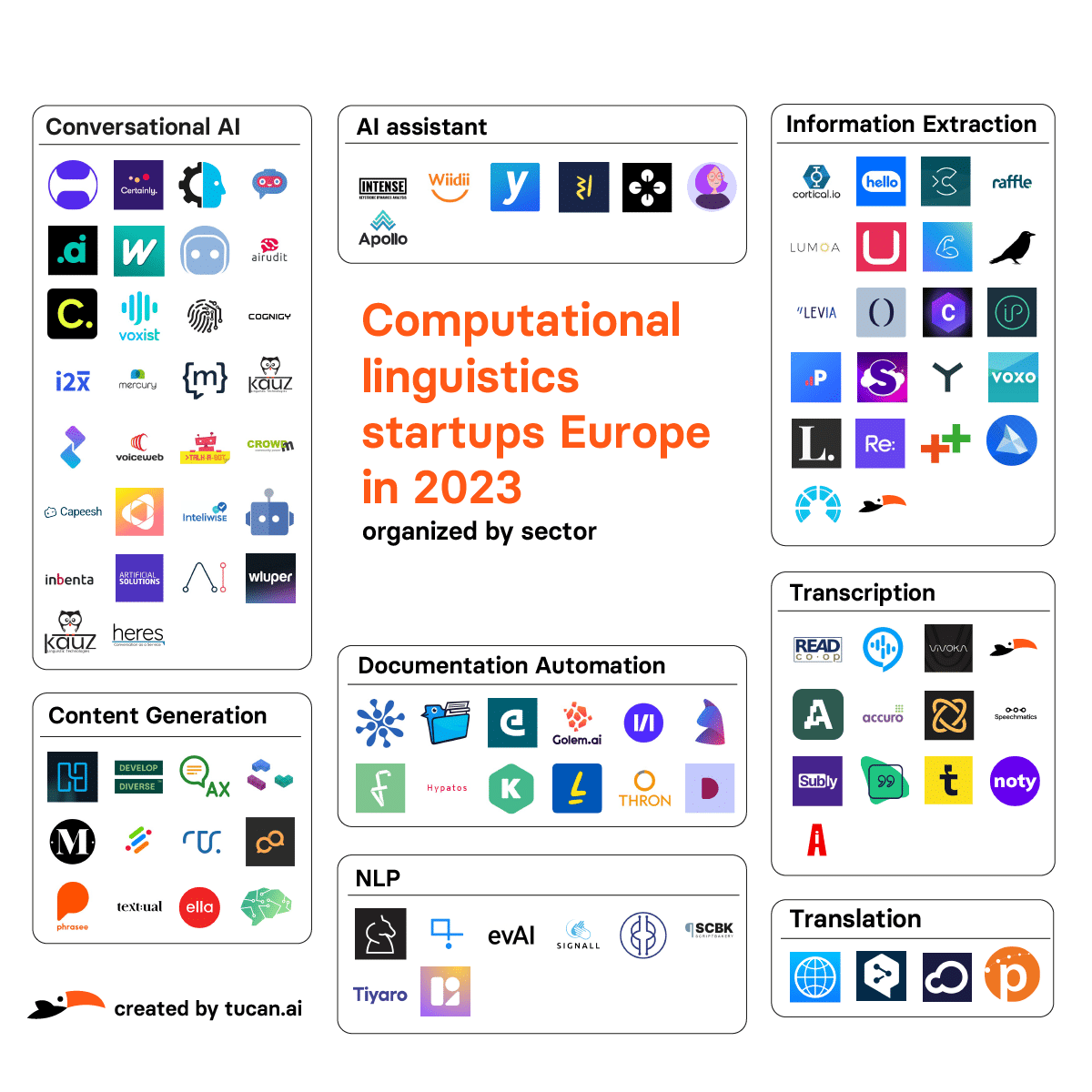The AI Divide: How European Firms Can Harness Their Regulatory Strengths and Learn from US Innovation
Table of contents
European Companies' Headstart
Regulatory Alignment and Ethics
At the heart of European innovation is a rigorously defined regulatory framework highlighted by the General Data Protection Regulation (GDPR) and the anticipated EU AI Act. These regulations have initiated an era of heightened ethical awareness, where considerations around bias and fairness are not just afterthoughts but foundational components of AI strategies. This compliance-focused approach means European companies are not only generating AI solutions that respect individual rights but also pioneering models that could set global benchmarks.
As conversations around AI ethics become more prevalent, Europe’s early emphasis on these concerns places it in a thought leadership position capable of steering international policy making. A stringent regulatory environment also forces European businesses to be inventive within constraints, potentially driving more robust and universally acceptable AI solutions.
Governance and Board Involvement
The governance of AI in Europe is not left to IT departments alone; it has become a matter for boardrooms. With top-tier executives often at the helm of AI initiatives, tech adoption is closely wedded to the broader business strategy and operational objectives. This level of executive involvement ensures that AI investments are more than just experimental; they are strategic, mission-critical decisions tied to long-term visions.
By leveraging high-level oversight, European companies can better anticipate future challenges and strategically leverage AI to meet them. This approach significantly reduces the risk of misaligned tech ventures and ensures AI efforts are commensurate with the company’s trajectory and stakeholders' expectations.
Confidence in Data and AI Control
European firms exude confidence in their ability to manage and control AI systems, a direct outcome of adhering to strict data governance standards. This is a critical advantage in a world where data is not only ubiquitous but also a prime target for misuse. The assurance of data integrity and controlled AI application instills trust amongst consumers and stakeholders alike, positioning European companies as dependable and responsible technology providers.
As AI becomes more deeply integrated into every aspect of business operations, this inherent trust will become invaluable. It grants a level of user assurance that is often lacking in less-regulated markets and ensures European AI solutions meet the highest standards of data quality and security.
Learning Opportunities from US Companies
Speed of Adoption and Experimentation
American corporations have taken the lead in the practical implementation of AI, with a key focus on speed and agility. US businesses tend to experiment extensively, rapidly prototyping and iterating to discover valuable and innovative use cases. This willingness to adopt and adapt quickly enables American firms to stay ahead of the technological curve.
European companies could benefit by injecting this same level of dynamism into their AI strategies. While being mindful of ethical considerations and regulatory frameworks, there is room for more immediacy in the deployment and trial of emerging AI tech. Doing so could shorten the innovation cycle and help European businesses not only stay competitive but also become trendsetters in the global market.
Realizing Business Value
The practical impact of generative AI on a company's bottom line is unmistakable in the case of US firms, where a higher percentage already report tangible business benefits from their AI pursuits. This direct correlation between AI deployment and enterprise value is a blueprint for European companies, highlighting the importance of deploying AI not just for the sake of innovation but for clear-cut business enhancement.
To optimize their AI-related return on investment, European businesses should look closely at American strategies—namely, the integration of AI into core business processes from the outset. This ensures that AI initiatives are not just technologically advanced but also acutely business-oriented, ultimately contributing to overall enterprise growth.
External Partnerships for Skills
In contrast to Europe’s emphasis on cultivating in-house AI talent, American companies often turn to external partnerships to accelerate their AI proficiency. This collaborative approach can bring complementary skills to the table quickly, adding to the company's arsenal without the long lead times associated with internal training and recruitment.
European firms could embrace this external resourcefulness, broadening their AI capabilities rapidly without diluting their commitment to internal development. This hybrid model of sourcing AI skills can be the catalyst for accelerated innovation and more robust ecosystem partnerships.
Investment and Resource Allocation
Finally, the levels of investment that US companies funnel into AI far exceed those in Europe, showing a more aggressive stance towards capturing industry leadership in AI. European companies can take a leaf from the American book on strategic investment and resource allocation, putting more financial weight behind their AI ambitions.
By learning from the American approach of prioritizing AI investment, European businesses could more confidently venture into new market opportunities, investing not just capital but also a strategic vision into their AI endeavors. This intensification of resources would catalyze innovation and solidify a competitive stance on the world stage.
Charting a Balanced Future: The Convergence of European Ethics and American Agility in AI Leadership
While European businesses naturally lean towards a compliance-oriented, ethically grounded, and governance-focused AI strategy, adopting some of the bolder, more agile traits of the US approach could invigorate their AI practices. By marrying the European penchant for ethical AI with the American zest for rapid innovation and adoption, European companies could unlock unprecedented AI value and global influence. As the digital world continues to evolve, those firms that learn to effectively blend these contrasting paradigms of AI development will emerge as the true leaders in the artificial intelligence age.
Disclaimer: This blog article is grounded on insights and data from the "Generative AI Radar 2023 Europe" by Infosys. The referenced report provides a comprehensive analysis of the state of generative AI adoption among European companies, contrasting it with developments in North America. By interpreting and extending the findings of the Infosys study, this article explores the unique positions and opportunities European firms face within the burgeoning AI industry. For a thorough understanding of the original research, readers are encouraged to consult the complete Infosys Generative AI Radar 2023 Europe report.
Looking for an enterprise solution?
Whether custom data model training, custom workflow integrations, cloud or on-premise, or advanced security features, anything is possible with Tucan.ai. Tailor your package to your needs together with your personal Tucan.ai advisor.
Book a free consultation call!
The new AI frontier: Short introduction into the most common language models
Language models can perform a variety of tasks, including writing essays, summarising articles, answering questions, creating captions and even composing music. But not all of them are created equal. There are different kinds of language models, each with its own strengths and weaknesses. In this blogpost, we will explore the three major types which have emerged as dominant, and we will discuss why and how they can be extremely beneficial to us.
Large language models
Large language models are the behemoths of the language modeling world. They are trained on massive amounts of text data, sometimes billions of words, from various sources such as books, websites, social media, and news articles. They use deep neural networks with hundreds of layers and billions or trillions of parameters to learn the statistical patterns of natural language.
Some examples of large language models are GPT-3 and -4, BERT, and T5. These models can generate coherent and diverse texts on almost any topic, given a suitable prompt. They are also able to perform multiple tasks without any further training, by using few-shot prompting techniques. GPT can write movie reviews, solve math problems, take college-level exams, and even identify the intended meaning of a word.
Large language models are impressive, but they also have their limitations. Firstly, they require plenty of computational resources to train and run, which makes them expensive and inaccessible to many users. Secondly, large language models consume a lot of energy, which raises environmental concerns. Lastly, they may inherit biases and errors from their training data, which easily leads to harmful or misleading outputsl
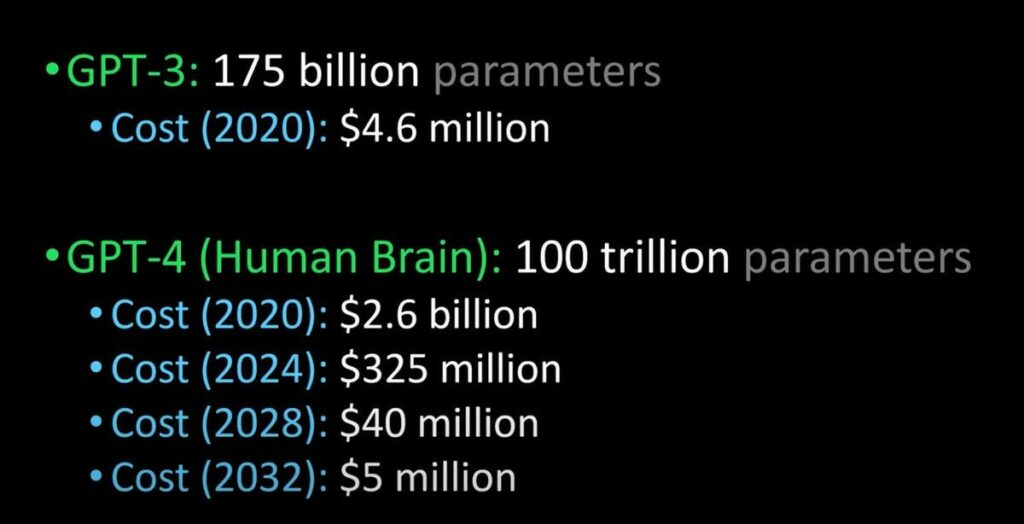
Fine-tuned language models
Fine-tuned language models are the specialists of the language modelling world. They are trained on a specific task or domain, using a smaller amount of data that is relevant to the task or domain. They use pre-trained large language models as a starting point and then fine-tune them on the task or domain data.
Some examples of fine-tuned language models are OpenAI Codex, GPT-3 Ada, and BERT-base-NER. These models can perform tasks that require more domain knowledge or accuracy than large language models. For example, OpenAI Codex can generate computer code from natural language descriptions2, GPT-3 Ada can write high-quality medical texts3, and BERT-base-NER can recognise named entities in text.
Fine-tuned language models are powerful, but they also have some drawbacks. They require more data and expertise to train than large language models. They may also overfit to the task or domain data and loose some of the generalisation ability of large language models. Furthermore, they may still suffer from some of the biases and errors of large language models.
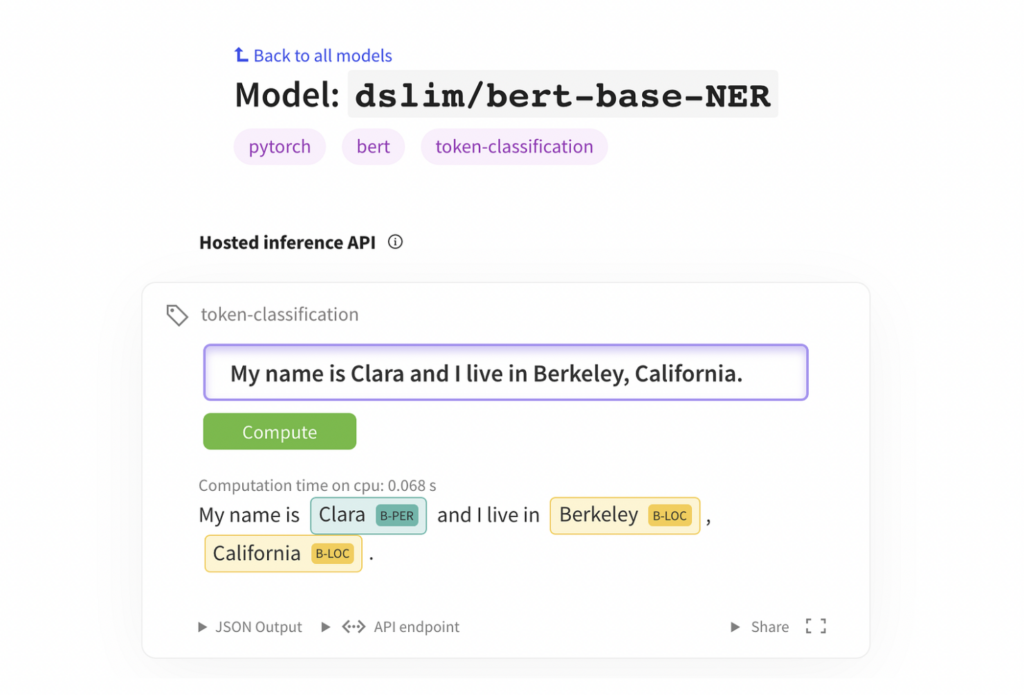
Edge language models
Edge language models are the lightweights of the language modeling world. They are designed to run on devices with limited computational resources like smartphones, tablets or smartwatches. Edge language models use smaller neural networks with fewer layers and parameters to generate natural language text.
The most prominent examples are TinyBERT, MobileBERT and DistilGPT-2. These models can perform tasks that require fast and local processing of natural text. For example, TinyBERT is able to answer questions on mobile devices, while MobileBERT can create captions for images on tablets and DistilGPT-2 has the skill of writing short texts on smartwatches.
Edge language models are definitely convenient, but they are also challenging, as optimising their size and speed without compromising their quality requires more engineering effort. Furthermore, they lag behind the state-of-the-art performance of large or fine-tuned language models on some other tasks.
Why language models matter
Language models matter because they enable us to communicate with computers in natural ways. They also empower us to access information more easily and efficiently. And they inspire us to create new forms of art and expression.
Imagine you are planning a trip to Paris and you want to find the best hotel, the cheapest flight, and the most interesting attractions. You could spend hours browsing through different websites, comparing prices, reading reviews, and making reservations. Or you ask a language model to do all that for you in minutes.
Language models are not only useful for travellers, but for anyone who needs to communicate with others or access information. They can help us research stories and write stories, but also learn new languages.
However, they do also pose some risks that we need to address. They may easily generate false or harmful information that can misinform or manipulate us, or they may amplify existing social inequalities or create new ones by excluding or discriminating against certain groups of people.
We need to be well-aware of the capabilities and limitations of different types of language models in order to use them responsibly and ethically. And we need to engage in continuous constructive collaboration and dialogue with researchers, developers, policymakers as well as users of language models.
You want to test Tucan.ai for your Company?
Book a free consultation call!
AI innovation in Europe: The 2023 computational linguistics landscape
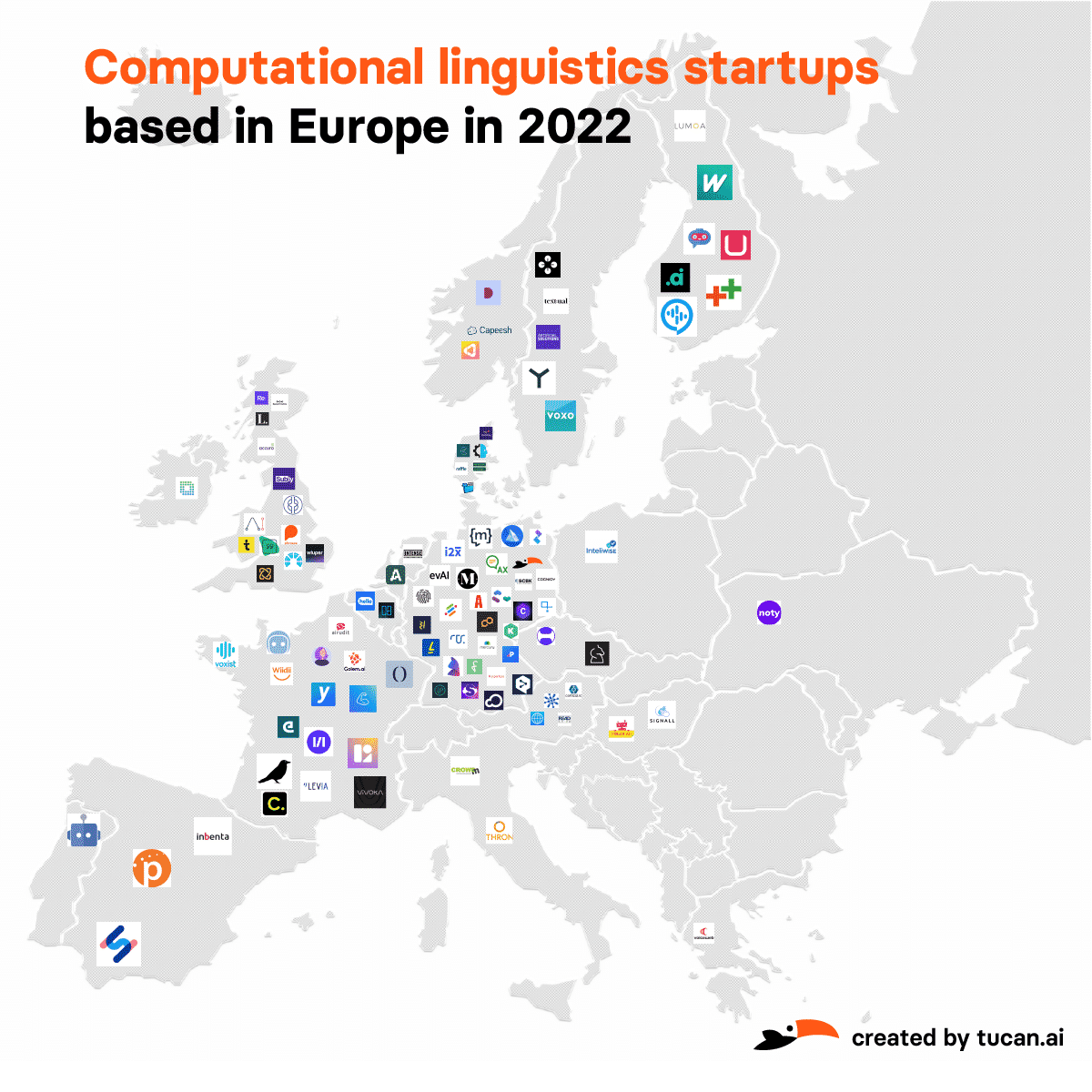
No doubt. We are in the midst of a digital revolution. Since ChatGPT's release a few months ago, large language models (LLM) and natural language processing (NLP) have been on everyone’s lips. But there are already many more useful tools other than OpenAI's wunderkind out there. Continue reading to dive deep with us into the world of computational linguistics (CL).
As a startup specialised in AI and CL, we at Tucan.ai experience and drive the impact of AI on our daily lives firsthand, both as a user and a developer. Despite deteriorations in the investment climate, methods of NLP and machine learning (ML) are greatly redefining our ways of using computers and language. This is shown, for example, in the still growing number of CL startups across Europe.
We took this as an occasion to create a comprehensive landscape overview of young European tech companies in the wider CL and NLP scene. Thanks to the help of our LinkedIn community we finalised the research project last week.
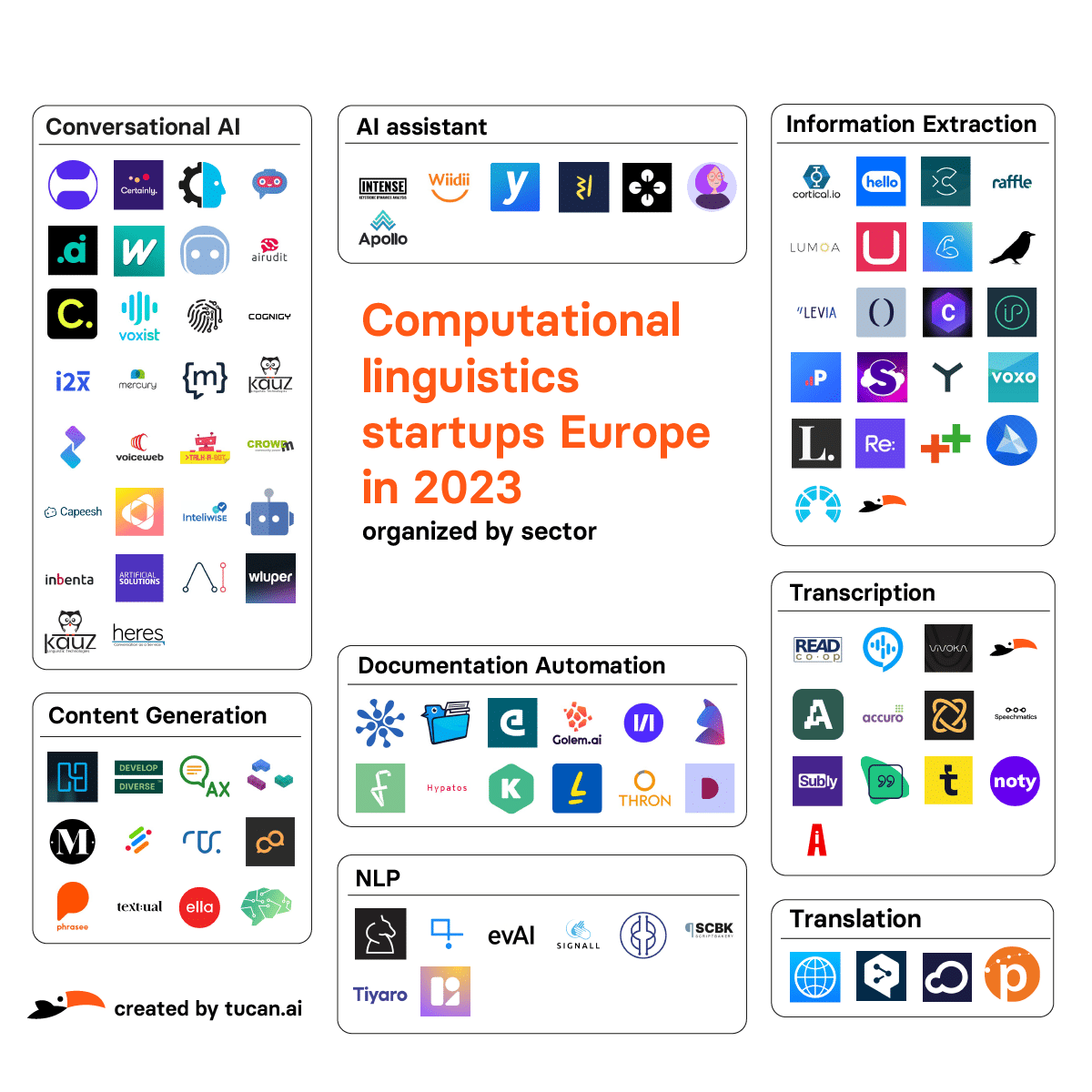
We tried to categorise CL startups according to their specialisations and core products.
Technical expertise, entrepreneurial spirit and customer focus are generally deemed the most important characteristics of successful tech startups. A deep understanding of the field and the ability to apply this knowledge to create new and innovative solutions are essential to stand out in the CL scene.
Young companies also must be willing to take risks and pursue unconventional ideas, even in the face of uncertainty and ambiguity. Plus, focus on customers to create solutions that actually meet people’s needs is important. This requires listening to feedback and being flexible enough to pivot and iterate based on it.
Let's now take a closer look at the various CL subfields and product niches and a few of the most promising players that have emerged across Europe. We tried to categorise them according to their specialisations and core products.
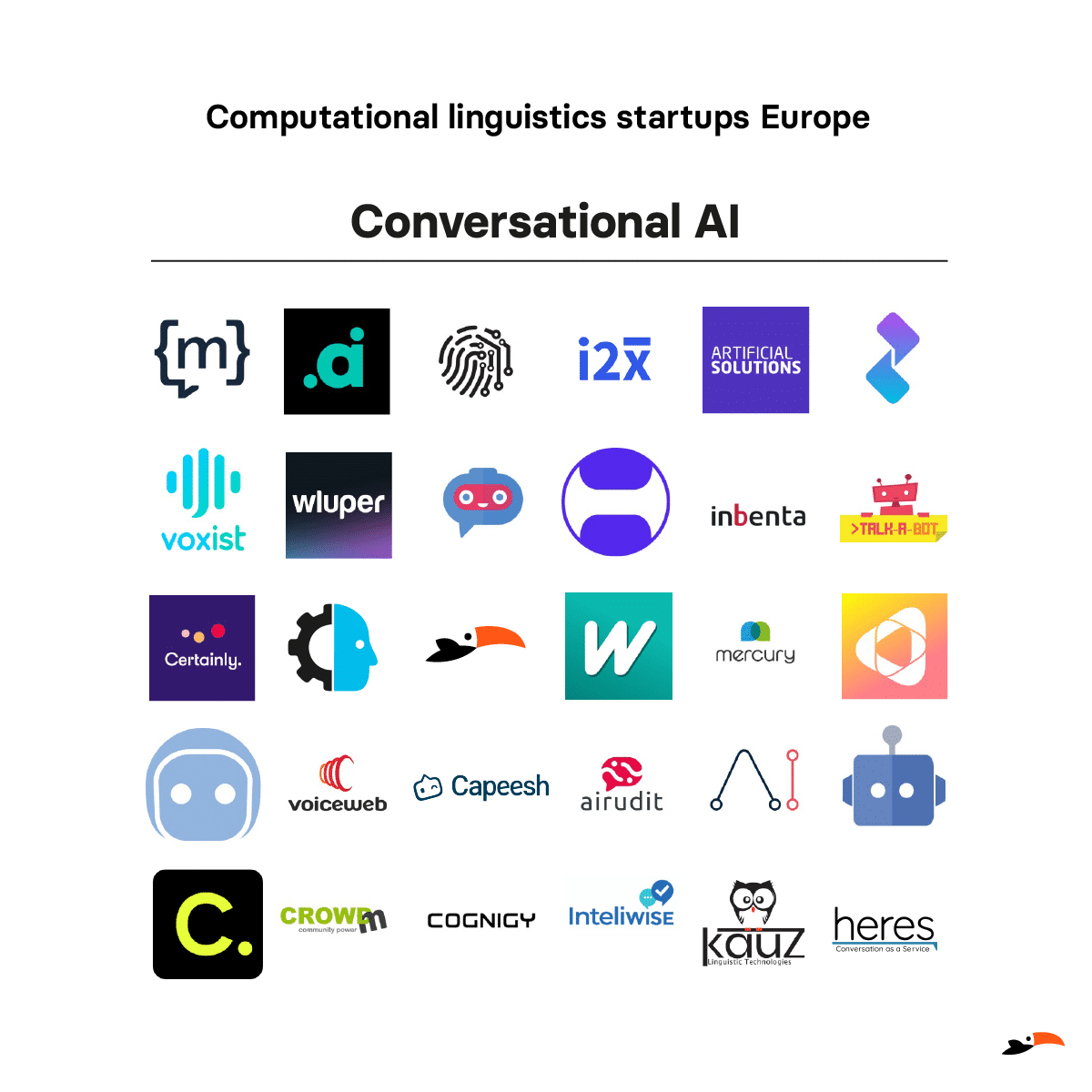
Conversational AI
AI engines allow people to interact with machines more naturally and intuitively by using voice or text input. Startups in this category develop products or services with one common goal: to make access to information easier and improve service experience with more human-like and personalised approaches.
Some of these companies focus on building chatbots that are integratable into already existing platforms liking messaging apps and websites. Others develop virtual assistants that can be accessed through voice or text commands, using AI and machine learning technologies such as voice recognition and NLP.
-
ko-bot - personalised chatbot for social media
-
Talk-A-Bot - enterprise chatbot provider for automating communication
-
InteliWISE - automation of chats for customer service, marketing and sales
-
Certainly.io - "a digital twin of your best sales person"
-
InDialog.ai - chatbot to improve CX knowledge and management
-
Elias Robot - language learning solution for English students
-
Front AI - AI-based customer service bots
-
WordDive - app for learning languages
-
Airudit - Voice AI technology
-
Botmind - e-commerce customer support automation
-
Clustaar - chatbot and SEO optimisation
-
Voxist - transforming data with voice
-
Charles - revenue and branding for WhatsApp
-
Cognigy - levelling up enterprise contact centres
-
I2x - collaboration of human and AI for common good
-
Mercury.ai - chatbots for customer service
-
moinAI - chatbot for customer conversations
-
Zana Technologies GmbH - conversational AI for the healthcare industry
-
VoiceWeb - speech processing technology and UI provider
-
CrowdM - chatbots for marketing performance
-
Capeesh - teaching foreign staff new languages
-
Cavai - conversational advertising platform
-
Visor.ai - platform for service interactions without coding
-
Inbenta - online self-service and conversion with AI and NLP
-
Artificial Solutions - provider for SaaS platform Teneo
-
EBI.ai - AI assistant platform
-
Wluper - voice user interfaces
-
Kauz - automatisation of help desks and customer service
-
Heres - "conversation as a service"
Did we miss any startups? Suggest new ones here and we will consider them in our next update!
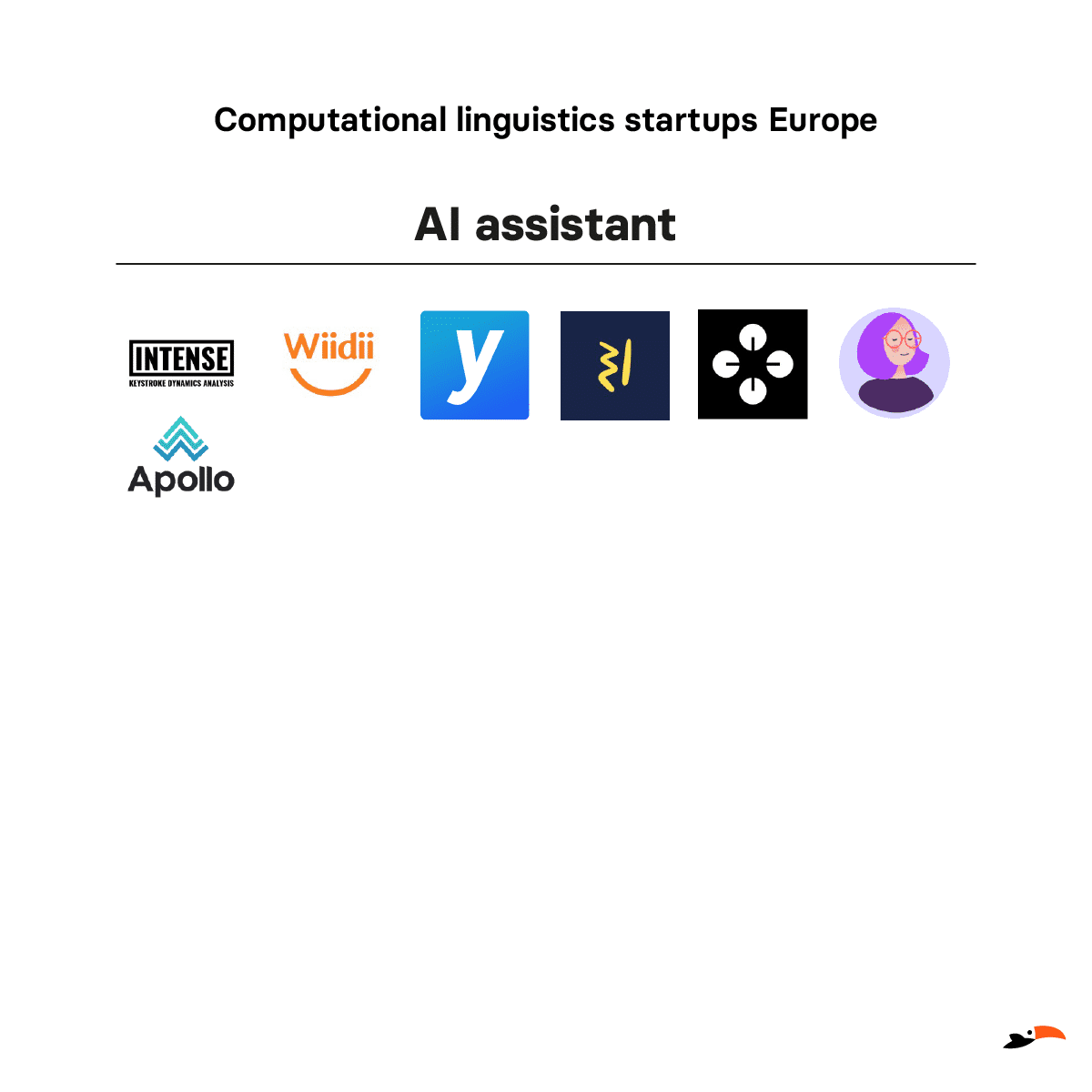
AI Assistants
Speaking of, virtual assistants, also called AI assistants, can be handy helpers in managing your tasks. Whether as bot, app or API, they assist you in figuring out and managing how to use your time more efficiently, prevent unnecessary work - et patati, et patata.
As a user: You can give a text or voice input and the assistant responds to you with clear advice on what to do next. For your work life: You can get guidance for managing your emails, social media, internal communications or campaigns.
In response to the Corona pandemic, demand for AI assistants has skyrocketed. AI-powered assistance tools such as those from IBM or the French meeting and agenda management assistant JulieDesk help professionals automate and optimise analytics and operational processes.
Some virtual assistants can for instance pre-select queries and automatically answer frequent ones with the help of scripted rules. They continuously learn new answers to routine questions through integrations with backend systems.
In the Netherlands, Intense Solutions caught our eye due to their innovative approach towards AI and NLP to develop algorithms which automate tasks and processes like predictive analytics and sentiment analysis.
The Dutch startup had the idea to develop software that helps companies assess if their employees are at risk of burnout and if implementing tools for prevention is necessary. Intense Solutions’ tools can be integrated into existing systems to provide actionable insights.
-
JulieDesk - a virtual assistant collaboration team for managing tasks
-
Wiidii - AI solution for communication and emotion detection
-
Personio - all-in-on HR solutions
-
Intense Solutions - "keyboard of the future"
-
Sana Labs - AI-powered learning platform
-
Apollo.ai - software for meeting management and decision-making
Did we miss any startups? Suggest new ones here and we will consider them in our next update!
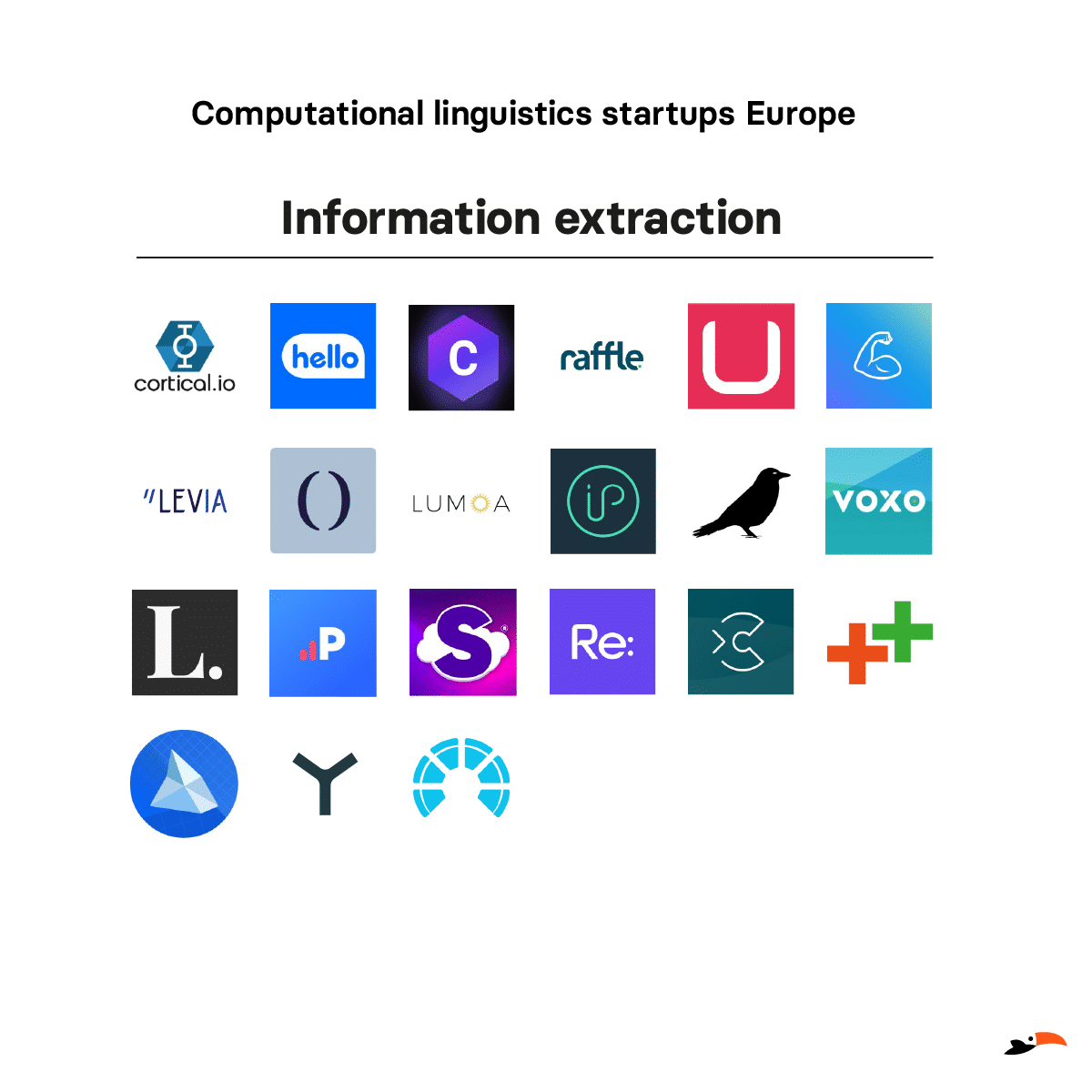
Information Extraction
Information extraction is the process of extracting structured information from unstructured data. The technology is based on NLP or/and NPU. It helps you find and collect the most valuable data for your project or company by automatically analysing various data sources.
Thanks to intelligent information extraction tools we are now able to sift through text documents (even handwritten ones), websites or social media platforms and find the data you need more quickly and easily.
To give an example and beat the advertising drum a bit for ourselves as well: While the AI-powered platform we have developed at Tucan.ai is build around in-house speech-to-text algorithms that are specialised in accurate transcription of unclear speech, it is also able to automatically extract, encode and summarise specific information from conversations, audio and text files.
-
Cortical.io - document processing solution
-
Hello Customer - AI-powered customer feedback analysis
-
Capturi - analyzing customer conversations
-
Raffle.AI - search engine which mimics human behavior
-
AISpotter - cloud-based video analysis and production service
-
Lumoa - guide for business growth
-
Utopia Analytics - machine learning service
-
Bodyguard.ai - moderation solution for detecting toxic content
-
Crowlingo - monitoring platform powered by Deep NLP
-
Levia.ai - turning knowledge into smart tools
-
Opsicidia - increasing diffusion of research results
-
Creatext - AI sales platform
-
IPlytics - great solution for patents and standard contributions
-
Lateral - solution for reviewing documents
-
Pyoneer - customer feedback analytics
-
Semantha - speeding up documentation processes
-
EdgeTier - analytical product and service for customer contact centres
-
Layke Analytics - tool for searching candidates
-
Voxo - actionable insights from conversations through voice data
-
Chattermill - customer intelligence platform
-
Logically - tracking harmful & problematic online content
-
Re:infer - conversational data intelligence platform
-
Tucan.ai - automatic information extraction from conversations
Did we miss any startups? Suggest new ones here and we will consider them in our next update!
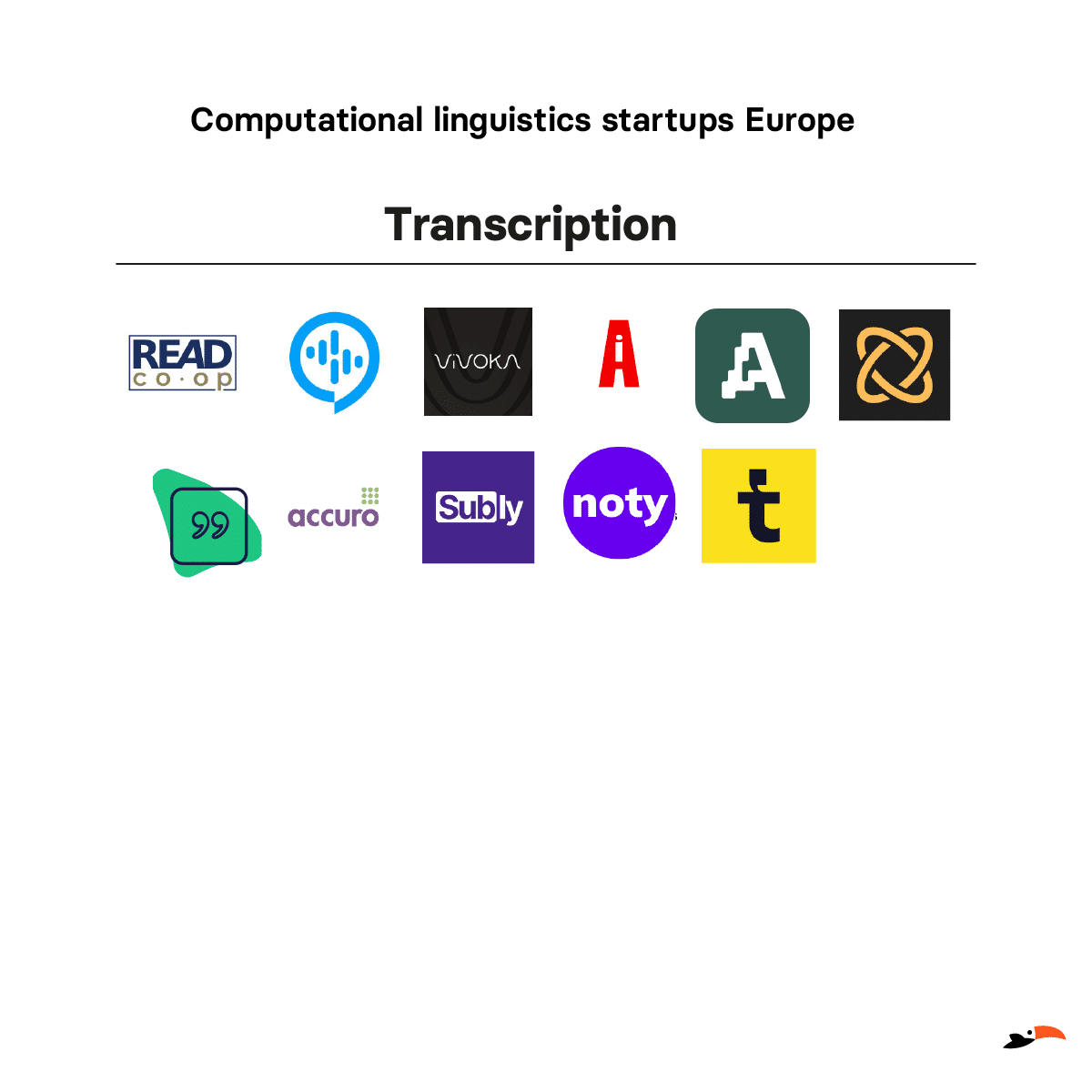
Automatic Transcription
Manual writing and typing is exhausting and time consuming and often leads to miscommunication and loss of information. AI-powered speech-to-text tools are able to take over tedious transcription, documentation and research tasks.
With Tucan.ai, which is developed in Berlin and Vienna, you can save up to 80% of your committed resources, focus and energy. As briefly mentioned above, the platform transcribes, encodes and summarises interviews, calls, meetings and other conversations to help analyse and manage them, or simply put: to find and extract meaning in one click.
You want to test Tucan.ai for your Company?
Book a free consultation call!
-
READ coop - accessing archival documentd
-
Noty - transforming meetings into actions and follow-ups
-
Speechly - automatic speech recognition
-
Vivoka - adaptive personal voice assistant
-
Aiconix.ai - analysing and processing audiovisual content
-
Amberscript - "transforming audio into text"
-
Happy Scribe - transcription and subtitle platform
-
Accuro - AI-driven speech-to-text services
-
Alchemy Machines - conversation intelligence for legal
-
Speechmatics - top-knodge speech-to-text API
-
Subly - automatic subtitles and translations
-
Take Note - secure transcription services
-
Trint - speech-to-text platform for audio and video search
-
Tucan.ai - AI-powered transcription, summarisation and archiving
Did we miss any startups? Suggest new ones here and we will consider them in our next update!
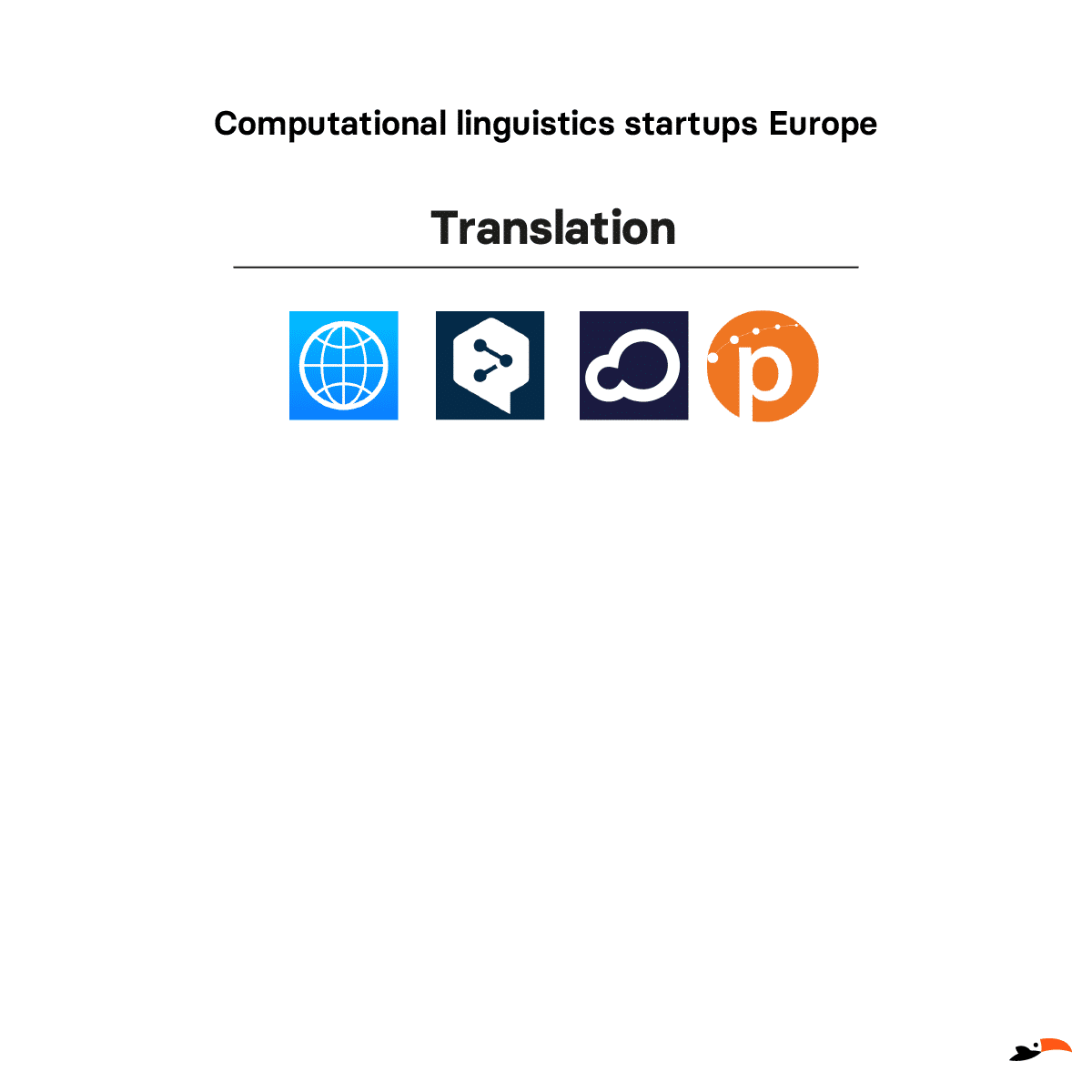
Automatic Translation
Making the process of translation easier, more accurate, and faster are the goals of AI translation startups. From translating one language into another digitally, you now can save a huge amount of time and also deal with large volumes of content, such as websites, marketing materials or technical documents.
One of the most well-known CL startups today is DeepL, based in Cologne. This startup is currently the most accurate translator on the market. In blind tests conducted in 2020 and 2021, the quality of their translations was compared to that of their competitors such as Google, Amazon and others. According to the study, they are on average three times more accurate.
With over 1 billion users worldwide, DeepL's popularity is undisputable. But their success story doesn't end here: The startup has recently become a unicorn after a fundraise at the valuation of 1 billion US dollars.
DeepL uses advanced neural machine translation technology, providing highly accurate and natural-sounding translations compared to traditional methods. With access to vast amounts of diverse training data, it can accurately translate a wide range of language pairs, also with complex grammar and vocabulary.
-
iTranslate - translation and dictionary app
-
DeepL - real-time AI translation
-
Lengoo - machine translation systems
-
Pangeanic - translating and anonymizing content
Did we miss any startups? Suggest new ones here and we will consider them in our next update!
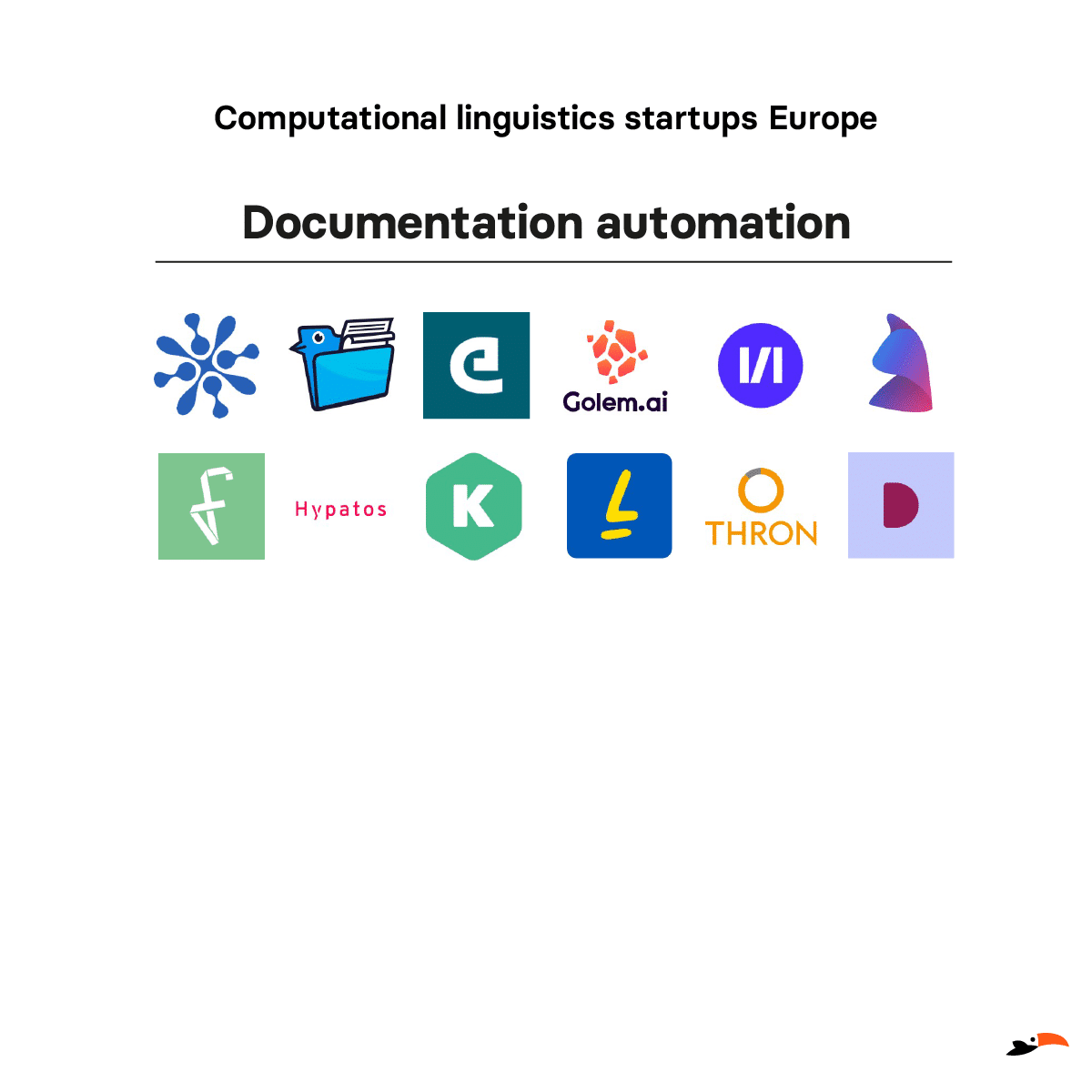
Document Automation
Startups in this field create, organise and manage your documentation. Added to that, they also work on algorithms which understand and interpret different types of content, such as text, images, and audio. Documenting your process in the company is essential to get valuable insights and a deeper understanding of your customer's behaviour and needs.
For example, DeepOpinion is an AI-powered platform that specializes in analyzing and extracting insights from customer feedback. They use NLP and machine learning techniques to help businesses gain a deeper understanding of their customers' opinions and preferences.
The platform can analyze customer feedback from a variety of sources, including social media, online reviews, surveys, and more. It then provides businesses with actionable insights and recommendations to help them improve their products, services, and overall customer experience. The goal is to help businesses make data-driven decisions and create closer connections with their customers.
DeepOnion is being developed in Tyrol, Austria, and aims at being able to dock onto systems such as SAP, Salesforce, Twilio, Microsoft Dynamics or Zendesk, so that the AI can do its work there. It aims to automatically read and distribute mails, create service tickets and process incoming documents like invoices and delivery notes, all tasks human employees usually get bored with very quickly.
-
hello customer - AI-powered customer feedback analysis
-
DeepOpinion - automation for text and document processes
-
Archii - identify and manage GDPR risks automatically
-
EMVista - text analytics for decision-making
-
Golem.ai - automatic processing of messages
-
reciTal - AI-driven editing software
-
Curiosity - search engine for all your apps
-
Fileee - documentation management for business and private
-
Hypatos - deeplearning technologies for automating document processing
-
Konfuzio - document automation platform for professionals
-
Levity - automation for routine tasks with images, texts and documents
-
THRON - digital asset management platform
-
Documaster - automatised document management
Did we miss any startups? Suggest new ones here and we will consider them in our next update!
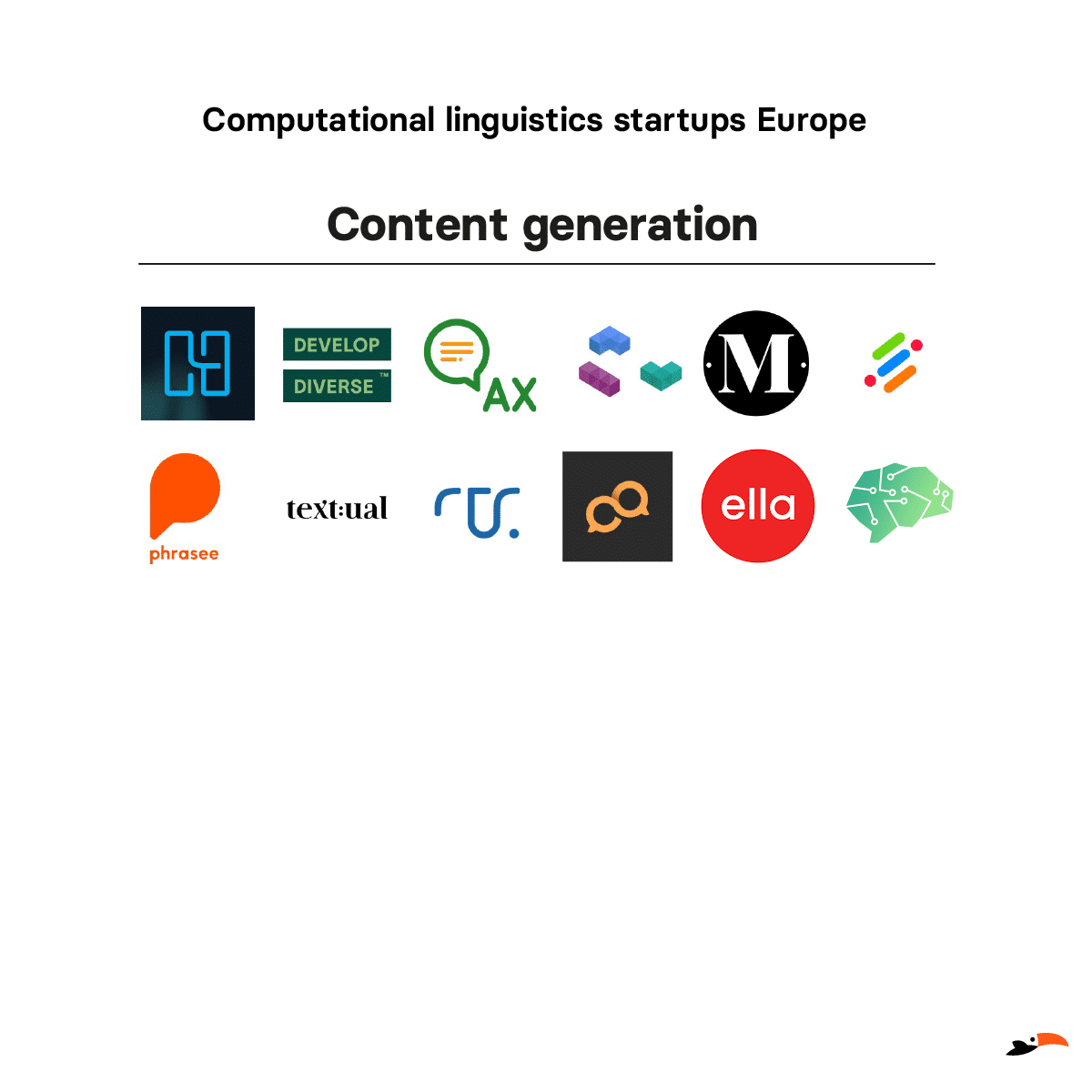
Content Generation
Automatically generated written texts are now possible with AI. Those startups can generate different types of texts for you to improve your workflow, and your writing skills, and help you to save time.
It will probably still take a while until writing tools perform at a human writing level, since it is difficult to reproduce human creativity, emotional and strategic thinking, but the technology is getting better and better at imitating these behavioural aspects. For now, however, AI-powered content generation should be understood as partial supplement or handy helper, rather than a replacement for human writing skills.
The Hamburg-based startup NeuroFlash develops an AI-powered platform that specialises in providing data-driven solutions to help businesses improve their operations and customer experience.
It uses advanced data analytics, ML and NLP to analyse large volumes of data from a variety of sources such as customer feedback, social media and other business metrics. NeuroFlash's solutions can be applied to various industries, including retail, hospitality and healthcare.
-
Henchman - drafting contracts
-
Develop Diverse - "building diverse and inclusive workplaces"
-
AX Semantics - automatically text generation in 110 languages
-
Flowshot.ai - scalable AI flows for text-based tasks
-
Mindverse - virtual marketing expert for AI
-
neuroflash - writing tool for German texts
-
Retresco - automatically generating texts
-
Twyla AI - chatbots for designing conversations
-
Textual - scalable content creation for e-commerce
-
Phrasee - automating marketing messages
-
Ella Media - AI-generated storytelling
-
SageWrite - "AI-powered academic productivity"
Did we miss any startups? Suggest new ones here and we will consider them in our next update!
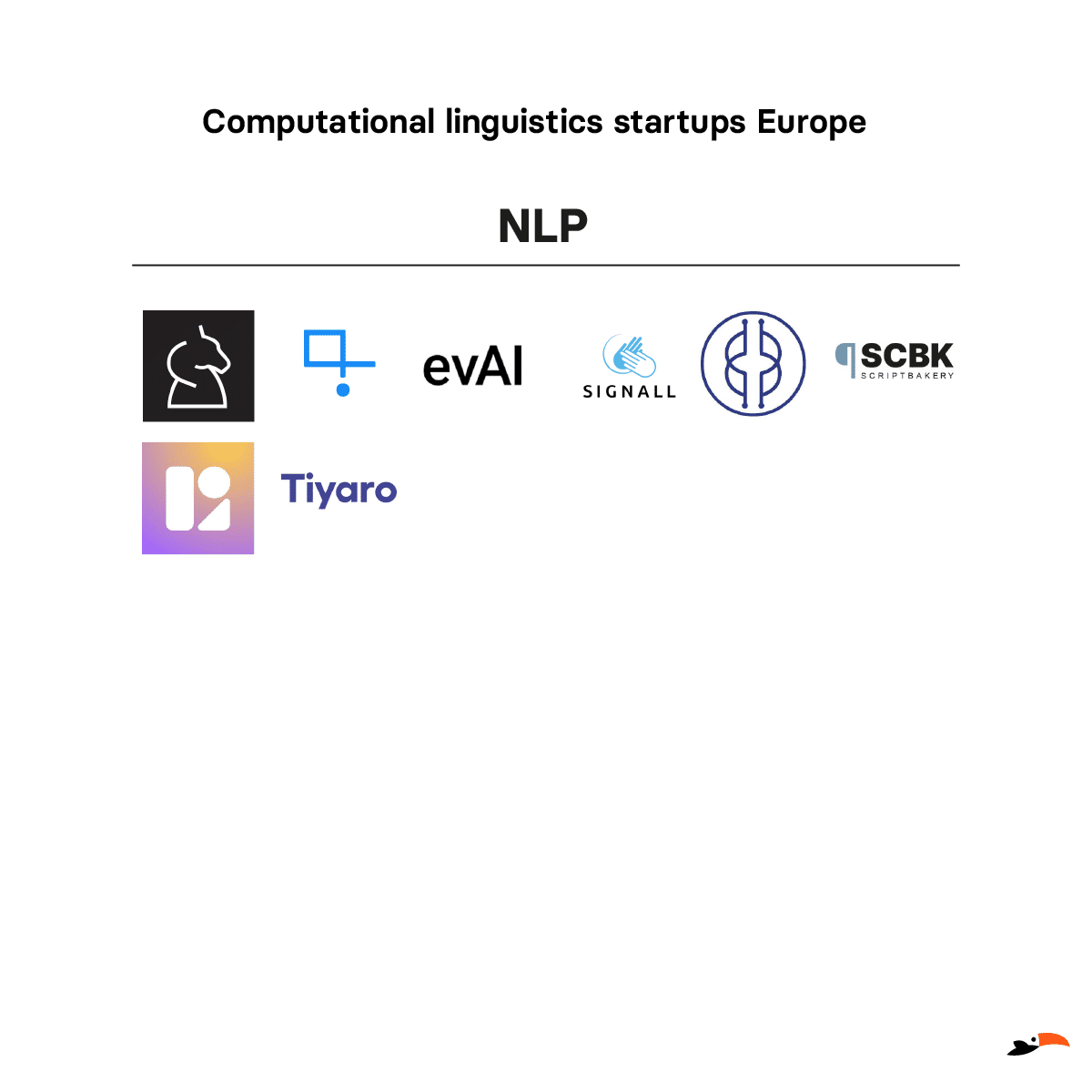
Natural Language Processing
NLP-specialised startups are companies that focus on developing technologies that help others to automatically process and understand human language.
These startups often use machine learning and other AI techniques to create products and services which can analyse text, speech, and other forms of human language. Some popular applications include NLP models for sentiment analysis, language translation, voice recognition and chatbots.
Over the past years, multiple NLP tools which use algorithms to log and analyse conversations, or even interpret them automatically, have been presented. So, there is more out there to discover than LLMs like GPT3 and GPT4. Much more.
NLP methods and systems for speech recognition and conversational intelligence each have their clear strengths and weaknesses, but when used in a targeted and combined way, they can already deliver a great deal of added value.
The fastest growing area is Automatic Speech Recognition (ASR), which converts spoken words into text. These systems work very precisely and are therefore ideal for tasks such as speaker attribution, logging and transcription. However, when it comes to recognising multiple speakers in noisy environments, as well as accents and dialects, some still have their difficulties.
Another innovative NLP element is Natural Language Understanding (NLU) systems. It goes beyond the transcription of words and tries to determine the meaning behind them. NLU is ideally suited for mood analysis, coding and intention recognition, for example. However, training is usually extremely complex because it requires large amounts of meticulously coded speech data.
Finally, there are systems that allow programmes to have an informative conversation with a human. Virtual assistants can automatically collect data, generate speech and give personalised answers, but usually still find it very difficult to correctly classify subtle forms of speech such as idioms or sarcasm.
-
SentiSquare - tailor-made AI for customer-generated text
-
SignAll - enabling communication between deaf and hearing people
-
Deepset - building open source search systems
-
evAI Intelligence - "putting data into context"
-
Scriptbakery - perceiving and finding of media content
-
NeuralSpace - accurate speech and text API
-
Tiyaro - evaluate, use and customise your AI
-
Lettria - allround NLP platform
-
Feelingstream - "stop losing customer service"
Did we miss any startups? Suggest new ones here and we will consider them in our next update!
Please note that this article is only intended to provide an initial overview of the myriad of new players, tools and opportunities that have recently emerged in the CL and NLP scene in Europe. There are perhaps still numerous other great startups and applications out there that are equally worthy of your attention.
If you know any you want to bring to our attention or in case you have questions about this article, we would love to hear from you.
You want to test Tucan.ai for your Company?
Book a free consultation call!


